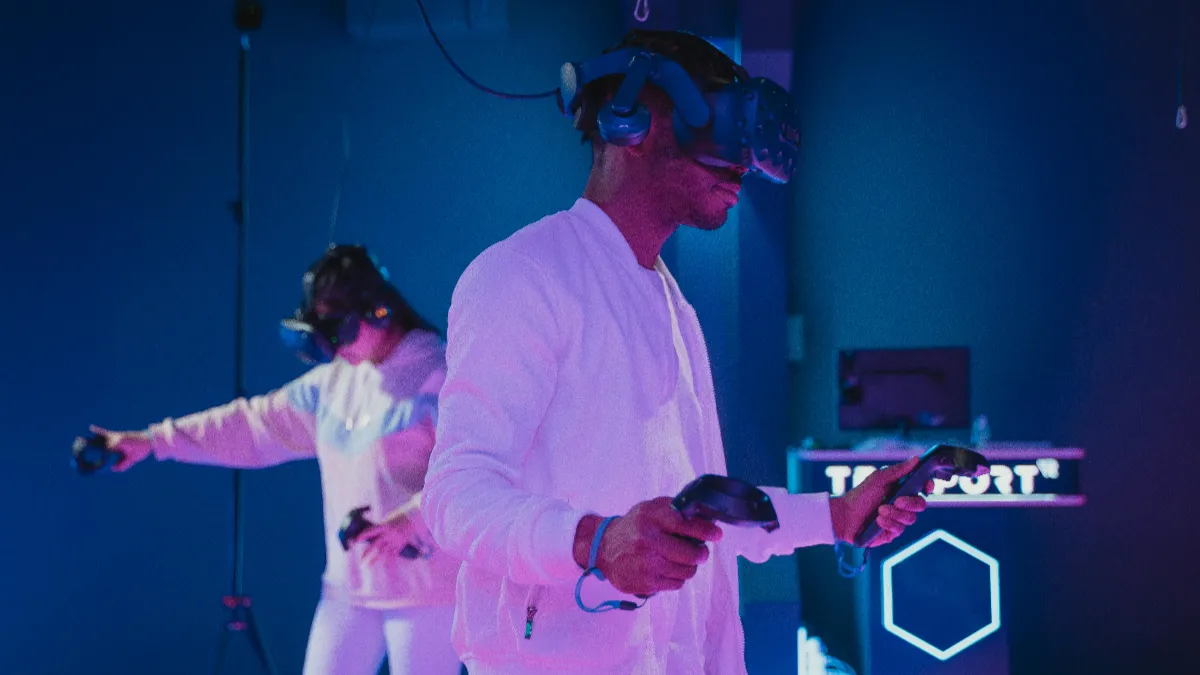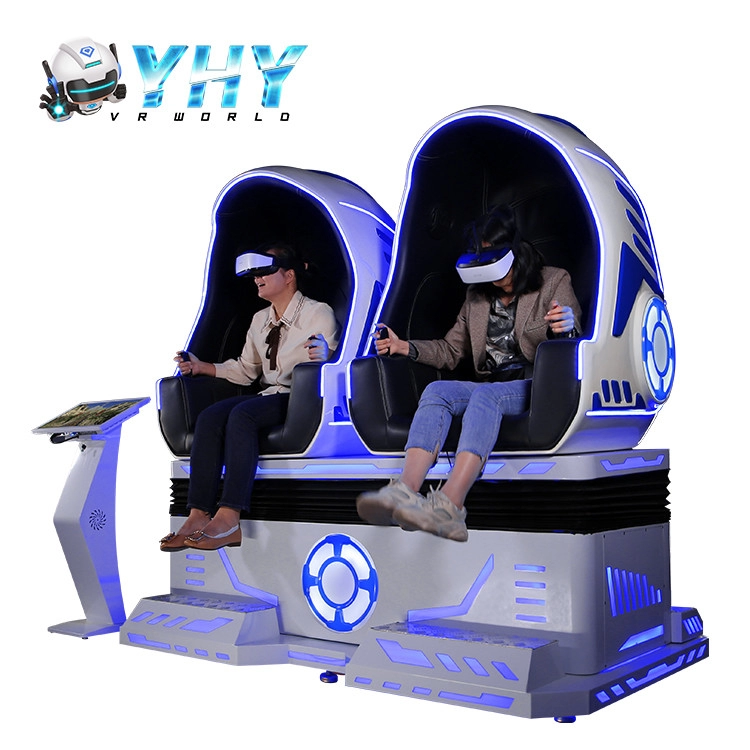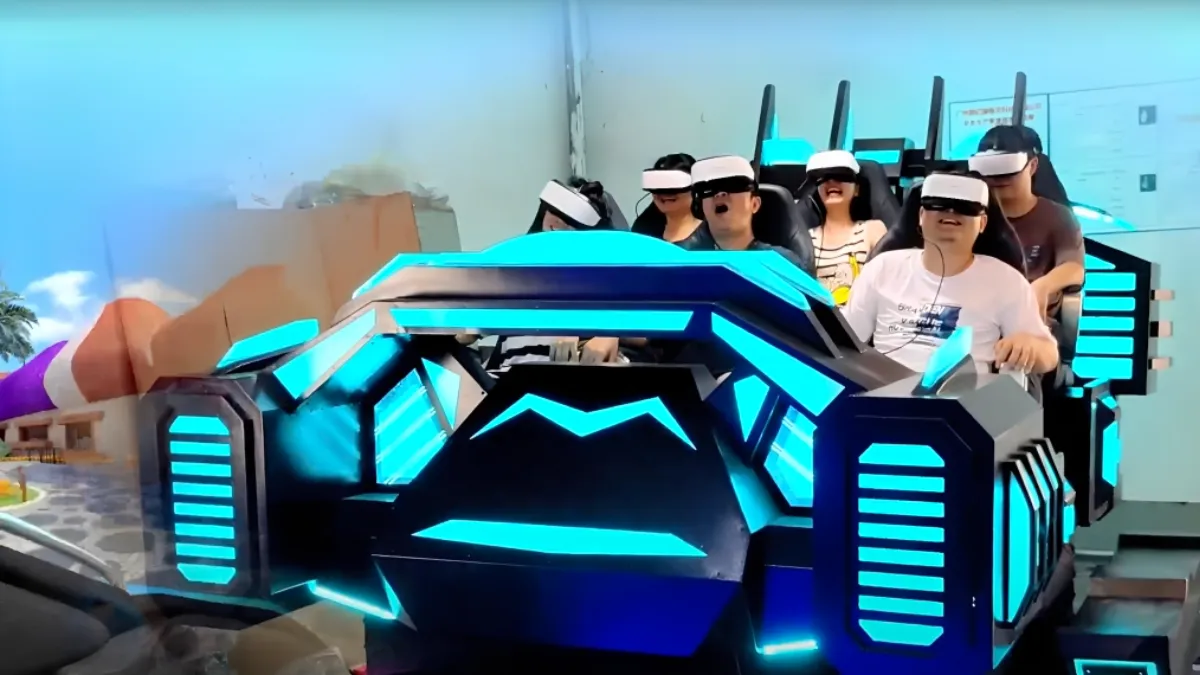Estimating the initial investment required for a VR theme park is a critical undertaking for any business plan. Unlike traditional amusement parks, VR theme parks involve a unique set of technological and infrastructure considerations that significantly influence the overall vr theme park price. A thorough and accurate estimation is paramount for securing funding, projecting profitability, and ensuring the long-term viability of the venture. This guide provides a detailed breakdown of the key cost components involved.
Breaking Down the Startup Costs of a VR Theme Park
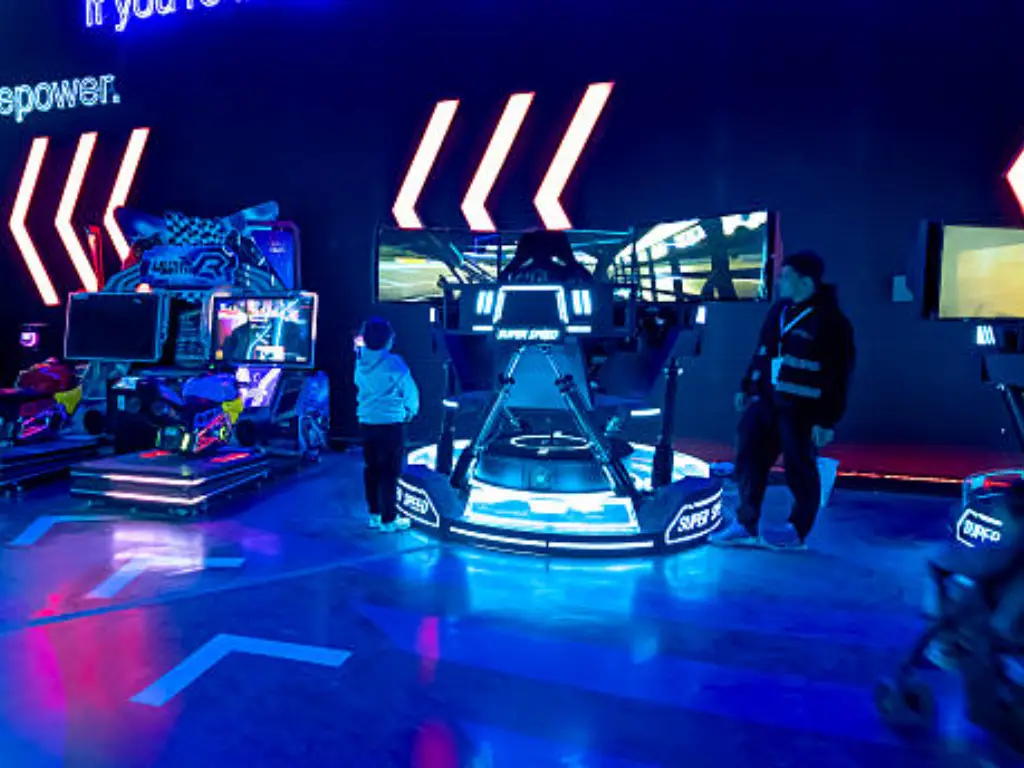
The initial capital expenditure for establishing a VR theme park is multifaceted, encompassing several key areas that collectively determine the overall vr theme park price. A thorough understanding of these individual cost components is essential for accurate financial planning and securing the necessary investment.
Here is the summary in a table format for the startup costs of a VR theme park:
| Cost Category | Details | Estimated Cost |
| Location & Renovation | Real estate lease, renovation for VR-specific infrastructure (partitioned areas, flooring, etc.) | $15 to $60 per sq. ft. annually (rent); $50 to $300 per sq. ft. (renovation) |
| Core VR Technology & Hardware Equipment | High-fidelity VR headsets, vr motion simulators (YHY simulators with 3DOF technology, etc.) | $500 to $2,000+ per headset; $50,000 to $100,000 for simulators |
| VR Experience Development or Licensing | Developing proprietary VR content or licensing existing content | $50,000 to $500,000 per experience (development); licensing fees vary |
| Theming & Immersive Environment | Themed sets, props, lighting, sound systems, and atmospheric effects | $100 to $500 per sq. ft.; $1M to $10M for large spaces |
| Facility Infrastructure & Support Systems | Ticketing/POS systems, security systems, communication networks, power & cooling systems | $5,000 to $30,000 for each system |
| Marketing & Pre-Opening Expenses | Website, branding, advertising, public relations, initial staff training, permits, soft openings | $20,000 to $50,000+ |
Note: The actual cost of a VR theme park can vary significantly based on multiple factors. The figures provided above are for reference purposes only.
Location & Renovation
In considering the financial implications of your VR entertainment venture, the strategic selection of a site and the subsequent modifications to that space are paramount. The geographical location dictates accessibility for the target demographic and significantly influences operational overhead. Commercial real estate rental rates exhibit substantial variation based on factors such as urban versus suburban settings, proximity to transportation hubs, and the overall economic vitality of the area. For instance, prime commercial spaces in high-traffic urban centers in the United States could need lease rates ranging from $30 to $60 per square foot annually, or even higher in exceptionally desirable locations. Conversely, comparable spaces in suburban areas or secondary markets might range from $15 to $30 per square foot annually. These figures are indicative and subject to market fluctuations and specific property characteristics. A thorough market analysis of your intended operating region is essential to establish a realistic budget for location expenses, a key component of the vr theme park price.
Beyond recurring lease costs, the initial renovation of the chosen space to accommodate the specific requirements of a VR theme park represents a significant upfront investment. Unlike conventional retail or entertainment venues, a VR theme park necessitates specialized infrastructure to support the technological and experiential elements. This can include the construction of partitioned areas for individual or group VR experiences, reinforced flooring to handle motion simulator platforms, dedicated cable management systems to ensure safe and efficient operation of numerous devices, and enhanced climate control systems to dissipate the heat generated by high-performance computing equipment. The cost of these renovations can vary considerably depending on the existing condition of the leased space and the complexity of your design, potentially ranging from $50 to $300 or more per square foot, significantly impacting the total vr theme park price.
Core VR Technology and Hardware Equipment
A significant portion of the initial vr theme park price is allocated to acquiring cutting-edge VR technology and the necessary hardware. This includes high-fidelity VR headsets, with costs ranging from $500 to $2,000+ per unit based on specifications.
For VR theme parks prioritizing highly immersive and dynamic experiences, VR motion simulations are a key element. As a specialized VR motion simulator manufacturer, YHY offers a compelling suite of products designed to enhance user engagement. Integrating simulators like the YHY Crossing 2, YHY Racing, and YHY Flight can significantly elevate the sense of presence. These YHY simulators boast CE and ROHS certifications, ensuring compliance with international safety and environmental standards. Furthermore, YHY’s exclusive 3DOF (3 Degrees of Freedom) technology provides a wider range of motion, enabling more flexible and precise dynamic movements compared to traditional 3DOF systems. This advanced 3DOF technology translates to a more nuanced and realistic simulation, effectively reducing the potential for motion sickness often associated with VR experiences. Selecting reliable and technologically advanced hardware, such as YHY’s certified and innovative motion simulators, is crucial for delivering a premium and enjoyable visitor experience.

VR Experience Development or Licensing
The content offered at your VR theme park is a critical differentiator and a significant cost driver. Developing proprietary VR experiences allows for unique and tailored attractions but involves substantial upfront investment in concept development, 3D modeling, software engineering, and rigorous testing. The cost per high-quality VR experience can range from $50,000 to $500,000 or even higher, depending on complexity and production value. Alternatively, licensing existing VR content can reduce initial development costs, with licensing fees potentially ranging from a few thousand dollars per title per year to a percentage of revenue generated by the experience. The decision between proprietary development and licensing significantly impacts the initial vr theme park price and the ongoing operational expenses. A balanced approach, potentially featuring a mix of exclusive and licensed content, may be the most strategic option.
Theming and Immersive Environment Construction
Creating a compelling physical environment that complements the virtual reality experiences is crucial for visitor immersion and can represent a significant portion of the initial vr theme park price. This includes the design and construction of themed sets, props, interactive elements, specialized lighting and sound systems, and atmospheric effects. The level of detail and the scale of the theming can vary widely, with costs potentially ranging from $100 to $500 or more per square foot of themed area. For a 10,000 to 20,000 square foot facility, theming costs could range from $1,000,000 to $10,000,000 or more. Investing in high-quality theming enhances the overall visitor experience and contributes to the unique appeal of the VR theme park.
Facility Infrastructure and Support Systems
A functional VR theme park requires a robust underlying infrastructure. This includes ticketing and point-of-sale (POS) systems, which can range from $5,000 to $20,000 or more depending on complexity and integration capabilities. Security systems, including surveillance cameras and access control, can cost between $5,000 and $30,000. Reliable communication networks, including high-speed internet and internal communication systems, are essential and can cost $5,000 to $20,000. Essential amenities such as restrooms, waiting areas with seating, and staff break rooms also require initial investment. Furthermore, ensuring adequate power distribution and cooling systems to manage the demands of the VR equipment can add significantly to the vr theme park price.
Marketing and Pre-Opening Expenses
Generating awareness and building anticipation before launch requires a dedicated marketing budget. Website development, branding and design, initial advertising campaigns (online, social media, and potentially traditional media), public relations efforts, and content creation can collectively cost between $20,000 and $50,000 or more in the pre-opening phase. Additionally, costs associated with hiring and training initial staff, obtaining necessary permits and licenses, legal fees, and conducting soft openings or test events need to be factored into the initial VR theme park price. A well-executed pre-opening marketing strategy is crucial for a successful launch.
Cost Control Strategies to Optimize Your VR Theme Park Price
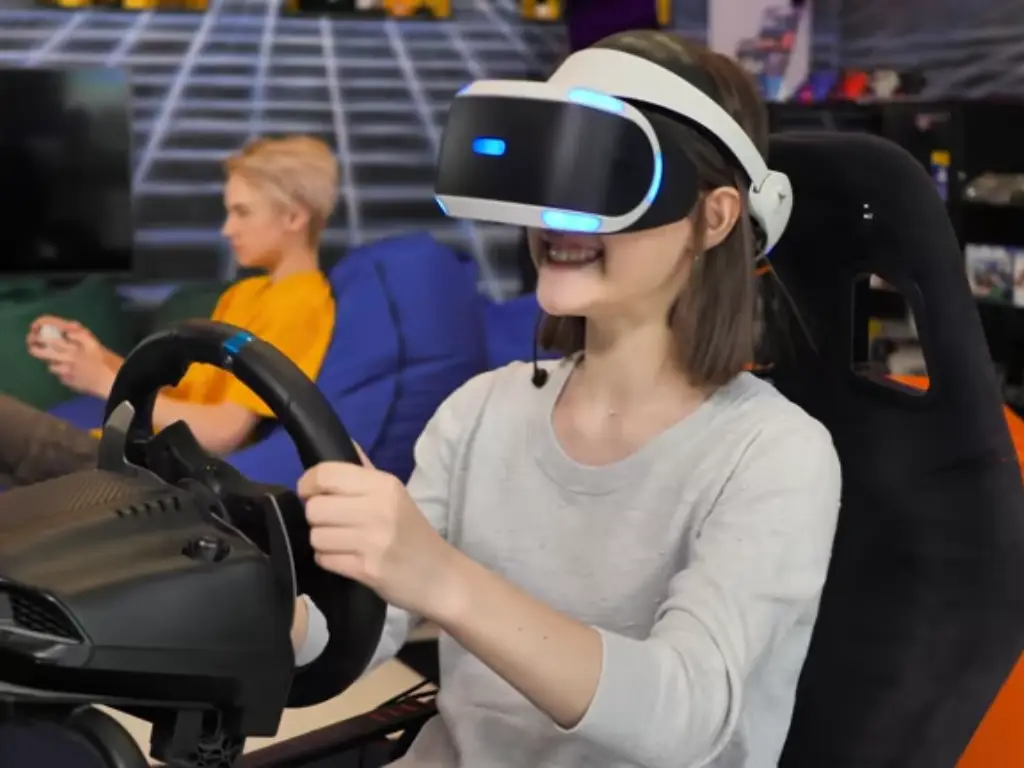
Controlling startup costs is crucial when planning a VR theme park. Here are some key strategies to optimize your VR theme park price:
- Phased Development: Avoid launching with all VR experiences at once. Begin with a select few high-quality attractions and expand gradually as your business grows and generates revenue. For example, you might start with three core VR experiences and add two in the first year, and three in the second. This approach can significantly lower initial investment.
- Lease vs. Equipment Investment: Evaluate the feasibility of leasing some or all of your VR equipment. For rapidly evolving technology, leasing can reduce upfront costs and provide more flexible upgrade options. Compare the total cost of a three-year lease agreement versus purchasing and depreciating over five years to determine the most cost-effective option.
- Strategic Partnerships: Forge partnerships with VR content developers, hardware manufacturers like YHY, or other entertainment companies. This can lead to bulk purchase discounts, joint marketing opportunities, or cost-sharing arrangements. YHY offers comprehensive VR theme park solutions that can streamline implementation and potentially reduce costs. Here is a profitability blueprint for YHY’s VR theme park compared to traditional VR park:
| Classification | YHY’s VR Park | VS Results | Traditional VR Park |
| Area | 40㎡ | -60% smaller | 100㎡ |
| Total Devices | 16 units | +100% (2x more devices) | 8 units |
| Total Seats | 16 | +45.5% more seats | 11 |
| Approx Budget of Devices Purchasing (shipping fee not included) | $59135.86 | -$1,664 (-2.74% cost reduction) | $60,800 |
| Labour Budget | 1 x Tech Engineer1 x Receptionist | -50% fewer staff | 1 x Tech Engineer1 x Receptionist2 x Operators |
| Labor: $965/month | $1,930 | -$1,930(-50% lower cost) | $3,860 |
| Venue rentals: $69/㎡ | $2,760 | 60% cost savings | $6,900 |
| Turnover / Year | $1,152,000 | +$360,000 (+45.5% higher revenue) | $792,000 |
- Energy Efficiency: Invest in energy-saving measures from the outset, such as LED lighting, efficient HVAC systems, and smart energy management. This will lower long-term operating costs. Install motion sensors to turn off lights when areas are unoccupied and use programmable thermostats to optimize energy usage.
- Lean Operations: Optimize staffing levels, streamline operational processes, and leverage automation where possible to reduce labor expenses. Implement an online ticketing system to reduce the need for manual ticketing staff and use customer relationship management (CRM) software to streamline marketing efforts.
- Content Management: Carefully weigh the costs of purchasing existing VR content versus developing original content. A mix of licensed content and a few unique, in-house experiences may be a cost-effective strategy. License some popular VR games while developing one or two unique theme park-specific experiences.
- Technology Selection: Choose VR hardware and software that offer a balance between performance and cost-effectiveness. Avoid over-engineering and focus on delivering engaging and reliable experiences. Select cost-effective display solutions and weigh high-end versus mid-range processors where appropriate.
- Insurance: Secure comprehensive insurance coverage to protect against potential liabilities, equipment damage, and business interruptions. This is an essential and cost-saving measure in the long run. Purchase a policy that covers property damage, liability, and business interruption.
These strategies can help you effectively manage your VR theme park price and ensure financial sustainability without compromising the visitor experience.
Funding Your VR Theme Park: A Guide to Financing Options

Securing adequate funding for your VR theme park is a critical step. Here are some financing options available:
- Traditional Bank Loans: Business loans are a common option, but require a detailed business plan and proof of repayment ability.
- Venture Capital/Angel Investors: These investors provide funding for high-growth ventures, typically in exchange for equity.
- Crowdfunding: Launch a campaign on platforms like Kickstarter or Indiegogo to raise funds from a large number of individuals.
- Small Business Administration (SBA) Loans: These loans are guaranteed by the U.S. government and offer more favorable terms for qualifying small businesses.
- Strategic Partnerships: Partner with other companies interested in VR entertainment in exchange for funding or resources.
- Asset-Backed Financing: If you have valuable assets (like real estate or equipment), you can use them as collateral for a loan.
- Friends and Family: While risky, obtaining initial funding from loved ones may be a viable option.
Each option has its pros and cons, so be sure to carefully evaluate which approach best suits your specific circumstances and VR theme park price.
How to Plan for Long-Term Financial Sustainability in a VR Theme Park
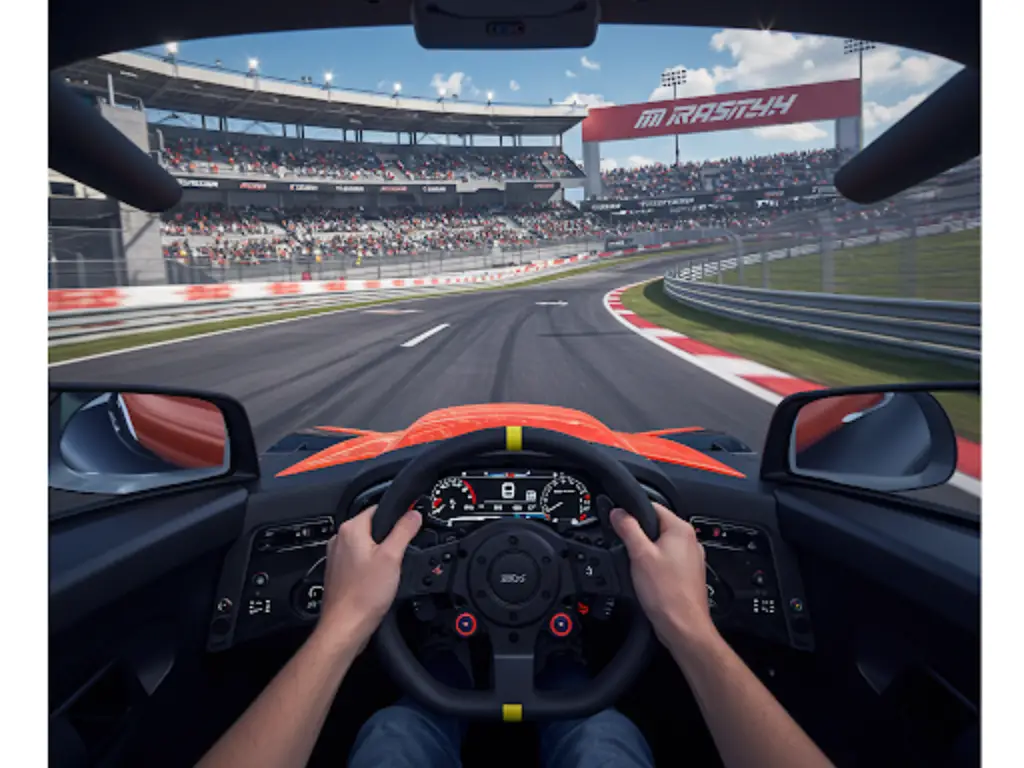
Ensuring the long-term financial health of your VR theme park requires proactive planning. Here’s how to achieve it:
- Dynamic Pricing Strategy: Implement flexible ticket pricing (e.g., tiered options, bundles) to maximize revenue and attract diverse customer segments. Regularly analyze demand and adjust pricing accordingly.
- Recurring Revenue Streams: Develop membership programs, annual passes, and offer merchandise, food, and beverage options to create consistent income beyond ticket sales.
- Content Refresh & Updates: Budget for regular updates to VR experiences to maintain visitor engagement. This includes licensing new content and developing original attractions.
- Exceptional Customer Experience: Prioritize high-quality service, personalized interactions, and a memorable atmosphere to foster customer loyalty and positive word-of-mouth marketing.
- Operational Efficiency: Continuously optimize operations to minimize costs. This includes energy efficiency, streamlined staffing, and technology to automate processes.
- Financial Monitoring: Track key performance indicators (KPIs) like attendance, per-capita spending, and customer satisfaction to identify trends and inform strategic decisions.
- Adaptability: Stay informed about VR technology advancements and adapt your offerings to remain competitive and meet evolving customer expectations.
FAQs
Q: What is a general estimate for the startup cost of a VR theme park?
A: Due to the variability in scale, location, and technology choices, it is difficult to provide a precise figure. However, expect the initial investment to range from several million to tens of millions of US dollars. A detailed feasibility study is crucial for a more accurate assessment of the vr theme park price.
Q: Is it more cost-effective to develop proprietary VR content or license existing experiences?
A: The optimal choice depends on your specific business strategy and budget. Proprietary development offers unique attractions but carries higher upfront costs and development risks. Licensing provides access to established content but involves ongoing fees. A thorough cost-benefit analysis considering both initial and long-term expenses is recommended.
Q: How often should a VR theme park plan to upgrade its technology infrastructure?
A: Given the rapid advancements in VR technology, budgeting for significant hardware upgrades every 3 to 5 years is advisable to maintain a competitive edge and offer cutting-edge experiences. Software updates and minor hardware refreshes may be necessary more frequently.
Q: What are the key financial metrics to monitor for a VR theme park’s success?
A: Critical KPIs include customer acquisition cost, customer lifetime value, revenue per available seat or station hour, gross profit margin, net profit margin, and return on investment. Tracking these metrics provides insights into the financial health and performance of the park.
Q: What are some strategies to mitigate the high initial investment associated with a VR theme park?
A: Strategies include phased development, strategic leasing of equipment, securing favorable partnerships, optimizing facility design for cost efficiency, and developing a comprehensive and persuasive funding strategy. Careful planning and a data-driven approach are essential for managing the vr theme park price.

